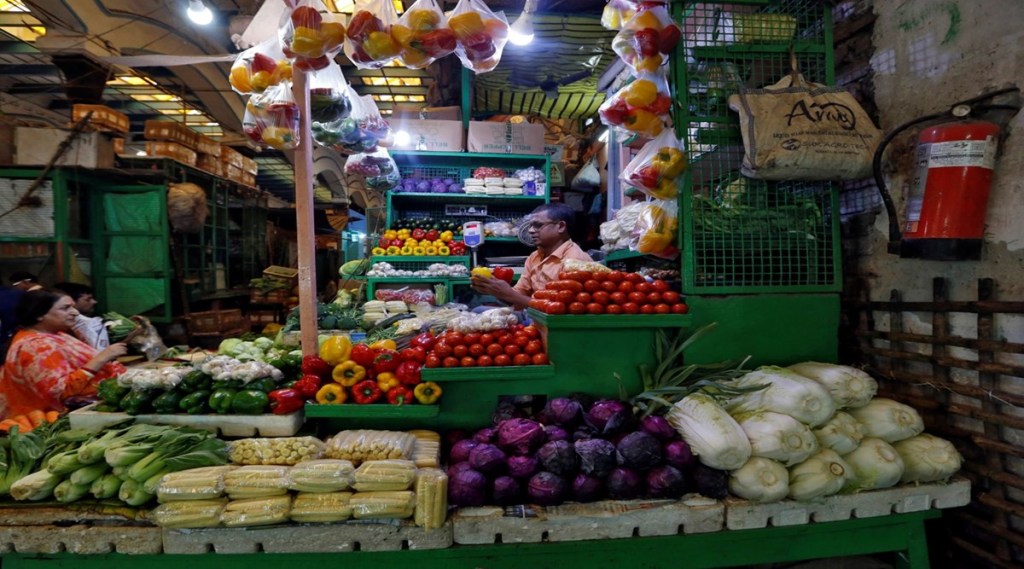By Anubhuti Sahay
The April Monetary Policy Committee (MPC) decision, due on April 8, is likely to mark an important turning point away from the accommodative monetary policy that the MPC has pursued since the Covid-19 outbreak. While we do not expect any changes to the rates or a shift in stance from accommodative to neutral, we expect the MPC to drop subtle hints of a possible shift over the next few meetings amid rising inflationary pressures.
The MPC’s FY23 (year starting April 2022) headline CPI forecast of 4.5% (announced at the February policy meeting) will likely be revised to be higher, probably in the range of 5-5.5%, amid ongoing geopolitical tensions and elevated commodity prices. We estimate FY23 CPI inflation at 5.4% assuming an Indian crude oil basket (ICB) price of $85/bbl. However, if ICB prices persist above $100/bbl, we expect CPI inflation to average c.6%. This can create a challenging backdrop for the MPC, especially if it maintains its accommodative stance for longer.
The MPC is mandated to keep CPI in the band of +2% to +6% with a medium-term target of 4%. Also, if headline CPI inflation prints above 6% for nine consecutive months (not our core view as of now), RBI will have to explain the reasons for such a breach to the central government and provide an estimated timeline for remedial measures to bring inflation back to the mandated band.
As the risk of such a breach exists, given the possibility of elevated commodity prices for longer, we believe the MPC should prepare the market for such a shift over the next couple of meetings. This can avert any sharp turns in policy decisions.
We acknowledge that the MPC members are likely to be concerned about the sustainability of the recovery process as high inflation is likely to erode purchasing power.
RBI’s October Monetary Policy Report (MPR) estimates that a 10% higher crude oil price from the baseline assumption can slow GDP growth by 20bps. Additionally, slowing global growth (especially in the US and European Union, where 35% of India’s exports are directed) is likely to weigh on economic activity; the MPR estimates that if global growth slows by 100bps below the baseline, it can pull down domestic growth by 40bps. Nevertheless, containing inflation will be important to ensure a wage-price spiral does not adversely impact medium-term growth prospects.
Equally important to note is that even as economic activity is yet to fully normalise, the recovery is gaining traction and the pandemic-induced low point in economic activity is behind us. Hence, the need for a very loose monetary policy does not exist. A 75bps increase in the repo rate to 4.75% from August-December 2022 (our base case of now), with a neutral stance, is likely to provide the MPC flexibility to steer in either direction depending on how inflation shapes up over the next few quarters. Even at 4.75%, the repo rate will be lower than the pre-pandemic repo rate of 5.15%. The need to provide support to selected sectors exists, although this can be achieved via targeted measures rather than low rates for all the sectors.
We do see a risk of repo rate increases of more than 75bps should CPI inflation average over 6% in FY23; the risk of repo rate hikes from June 2022 also exists. However, we think the MPC is unlikely to turn very aggressive on the quantum of rate hikes given the still recovering growth and increasing global concerns on stagflation.
Also, strong external-sector buffers (double-digit import cover) allow the MPC to stay focused on domestic fundamentals rather than being driven by sharp rate increases by major central banks. Thus, we expect the April MPC meeting to flag concerns on inflation more explicitly, even as the MPC reiterates its commitment to supporting growth.
Will RBI increase the reverse repo rate from the April policy meeting? We do not rule out such a possibility completely. However, we think the probability is low as RBI Governor Shaktikanta Das has repeatedly reiterated the importance of communication and forward guidance as monetary policy tools in his past speeches.
Additionally, as Governor Das has also stated that the accommodative stance is reflective of unchanged repo and reverse repo rates, an increase in the reverse repo rate is likely to be preceded/accompanied by a change in stance towards neutral.
We therefore expect the April MPC meeting to be more about communication and preparing the market for a reversal in the next few meetings rather than outright action. We expect the first reverse repo rate hike in June and expect the corridor to be normalised by August.
The minutes of the MPC meeting, to be released two weeks after the MPC announcement on 8 April, will provide more colour on each member’s views on growth-inflation dynamics. MPC member professor Varma has reiterated the need to shift to a neutral stance since the August 2021 meeting. The minutes will be closely watched to see if more members are now in favour of a neutral stance.
We do not expect any major announcement on liquidity management in the upcoming policy meeting as RBI has been managing this actively. Nevertheless, with increased dollar outflows, RBI may have more room to buy government bonds and support yields. But this will likely play out over next few quarters rather than the policy day itself.
The writer is head, South Asia, Economics Research, Standard Chartered Bank.


